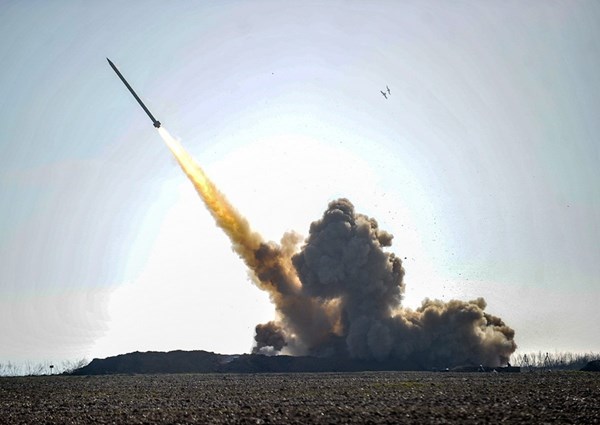Russian Aerospace Forces' communication center and military unit hit in coordinated attacks on Crimea
On December 20, an attack was carried out on the Center for Long Range Space Communication of the Russian Aerospace Forces and the military unit No. 28735 in Crimea, reports the Russian Telegram channel ASTRA. The news outlet notes, citing sources, that two simultaneous attacks were carried out on the peninsula. The first attack took place near Alushta at around 4 am.
At least three hits were recorded on the military unit of the Russian Federal Security Service in the village of Solnechnogorskoye.
"According to the initial information, the attack was carried out with UAVs. One serviceman of the FSB military unit was injured, and the satellite communication antenna was damaged," the news outlet reports. The second attack occurred at around 5 am. Preliminarily, the Center for Long Range Space Communication in the village of Vitino in the Saky district was hit by Storm Shadow missiles. The Telegram channel notes that at least two hits were recorded on the compound of the communication center. One military vehicle was damaged, but no one was injured.
The Telegram channel Crimean Wind notes that the explosions on the occupied peninsula started immediately after midnight. Explosions were heard from the direction of Perevalnoye, where the 126th Coastal Defense Brigade of the Black Sea Fleet is located. Subsequently, at 4:08 am, an explosion was heard in the vicinity of Yevpatoriya, and four explosions were heard in the Krasnoperekopsk area an hour later.
The Center for Long-Distance Space Communication in the USSR provided communication with spacecraft and carried out scientific research," noted the announcement. "After Ukraine declared independence, the Center came under the authority of the National Space Agency of Ukraine and operated as a research facility.
Following the annexation of Crimea by Russia, a military unit 81 415 was established in the aforementioned research center. The center consequently became integrated into the Russian GLONASS system. It was further enhanced with the Russian command-monitoring system Fazan MTS, boasting an a range of 100 to 40,000 km. This system effectively manages the diverse tasks involving Russia's entire orbital group.
